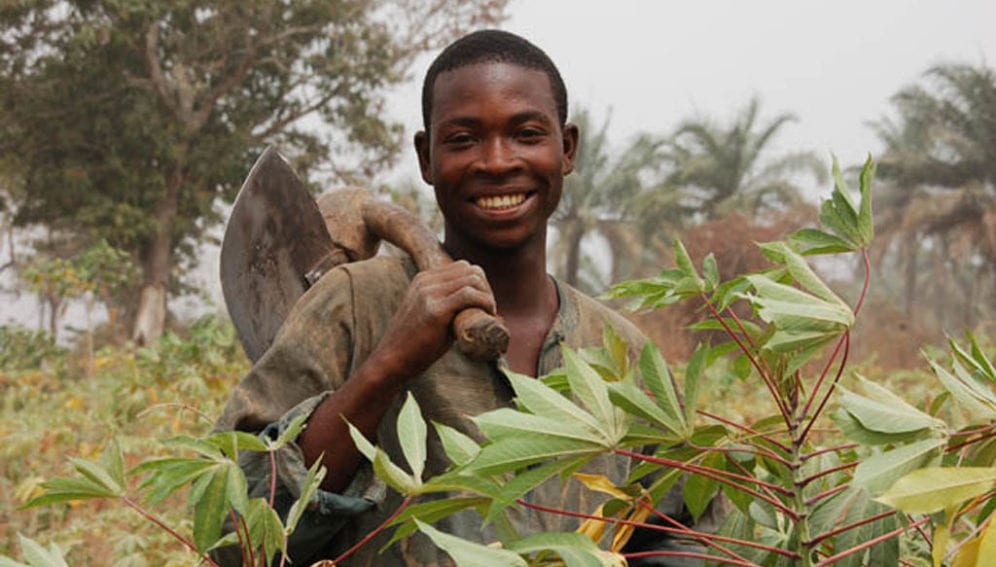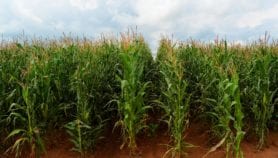10/04/19
Smallholders benefitting from digitised agriculture

Send to a friend
The details you provide on this page will not be used to send unsolicited email, and will not be sold to a 3rd party. See privacy policy.
[KAMPALA] For smallholders in Sub-Saharan Africa, low yields and decreased incomes are part of their daily struggles.
Peter Alisengawa, a 34-year old smallholder who lives in the remote Namukanagha village in Uganda’s Iganga district, says that agricultural productivity has been a mixture of hope and despair as he always records miserable yields.
The story is not different for 44-year old Esther Nakisige, who says farming has been unproductive for her.
“I always lack money to cultivate more, buy seeds and fertilisers for my farming,” she says.
A major problem that has been confronting the two Ugandan smallholders – who epitomise the struggles of many in Sub-Saharan Africa – is the lack of adequate information on best farming practices such as when and how to plant that could lead to increased productively, more income from their produce and better livelihoods. But a project in Uganda that uses information and communication technologies (ICTs) in agriculture is transforming the livelihoods of smallholders.
Digitising agriculture in Uganda
The project offers a bundle of a highly targeted digital services such as weather tips, loans, market linkages and drought insurance to farmers through short message services to their mobile phones.
“The least governments can do is to support digitising the operations of small-scale farmers because it is going to transform agriculture.”
Dick Nuwamanya Kamuganga, Ugandan National Farmers Federation
It uses satellite information through global positioning system to collect precise and accurate coordinates of farms and match them with the locations to aid their dissemination to farmers.
The project has agents who profile willing farmers into the service using mobile phones. The agents visit smallholder farmers at their homes and farms and take their details including -names, members of the family, type of crops they grow and their historical yields. After being enrolled, farmers can then receive preseason messages on their mobile phones.
Funded by the Dutch Ministry of Foreign Affairs, the Technical Centre for Agricultural and Rural Cooperation-led project has significantly increased smallholders’ crop yields and helped improved their livelihoods.
Balidawa Siraj, a farmer who serves as an agent of the project, is in charge of a sub-county with about 630 smallholders including 330 women, says his work is to sensitise farmers about the project and the advantages of enrolling in the service.
The project’s agents such as Siraj also give specific advice to farmers on when to plant, how to plant and types of crops to plant depending on the preseason messages received.
Challenges and benefits
“Illiteracy is a major challenge with the project as some farmers cannot interpret the alerts, but we do have annual meetings as farmers and we discuss and share more,” says Siraj, who has been with the project since 2015 when it began, adding that through sensitisations, farmers who cannot read or write are not left out.
Involving smallholders with a view to improving their livelihoods has brought confidence in commercial institutions.
“When I went to the banks for loans, they wanted land title deeds which I didn’t have. The banks didn’t give me an agricultural loan because they feared drastic climate change which would result in losses,” explains Siraj. “The projects was a relief to me as a farmer. I subscribed to the bundle services and got a loan of one million Ugandan shillings (about US$270) within a year which I used to buy two bags of fertilisers, 30 kilograms of maize seeds and used the rest on labour.
“Let farmers understand the importance and value of technology in agriculture before rolling out the programmes.”
Dennis Rapong’o, UjuziKilimo-Kenya
“The loan was also favourable in terms of interest rates. I repaid in six months after a bumper harvest.”
Anthony Masinde, a senior technical specialist at Farm Concern International in Malawi, agrees that Africa’s use of ICTs has transformed agriculture by making it cheap for financial institutions to do business with smallholders.
Transforming farming and economies
According to Michael Hailu, director of the Technical Centre for Agricultural and Rural Cooperation, agriculture should not only be taken for subsistence but as a business for smallholders to have enough not only for consumption but also to improve livelihoods and transform countries.
“The role of the smallholder producer is extremely important especially in Africa in terms of creating jobs but in order to succeed, agriculture has to be transformed,” explains Hailu. “It is through innovations and inclusion of technology into agriculture that smallholders can see high yields and also improve their incomes, livelihoods and their country’s economies”
Dick Nuwamanya Kamuganga, the president of Ugandan National Farmers Federation, said that, “The projects major challenge is the subscription of small-scale farmers as some are less educated and not able to conceptualise the digitisation of the project operations. It takes time to be able to convince some farmers on how helpful the technology is to them.”
Alisengawa touts the impacts of the project.
“Farming before subscription to the service was not profitable and hardly sustainable as I did not receive information on sensitisation about weather tips, among many others,” he says. “Initially I was growing maize on a small scale but since getting enrolled into the project, I have improved from one hectare to four hectares and production levels have increased from ten bags to 50 bags per hectare.”
According to Kamuganga, policymakers should invest in digitising agricultural operations for improving smallholders’ livelihoods.
“The least governments can do is to support digitising the operations of small-scale farmers because it is going to transform agriculture,” he tells SciDev.Net.
Sustaining digital agricultural projects
According to Hailu, there is a need for digital agriculture to be self-sustainable and free from funding.
Siraj says that farmers have to pay a fee before they can be enrolled and start receiving alerts. “The four packages for services are not free. Initially the fee was 14,000 Ugandan shillings (almost US$4) but it rose to about U$5 from January to June. However, the fee totally caters for the insurance,” he explains.
Dennis Rapong’o, the lead agronomist at UjuziKilimo-Kenya, an agricultural technology company, says that agriculture in Africa is headed in the right direction and with the right tools, there will be a reduction in poverty as a result of increased crop yields.UjuziKilimo-Kenya has developed a sensor-based soil testing kit to analyse the quality of soil, location of farms and send values to a database from which farmers receive short messages on their mobile phones on suitable seeds, soil treatment methods, fertiliser for high yields, he adds.
Farmers who have subscribed to UjuziKilimo technology also receives an additional relevant agricultural information and also market linkages and average market pricing for their produce.
But Rapong’o says that adopting such technologies by farmers is not easy because most are not flexible to change from their old ways of farming to modern methods influenced by such technologies.
“To deal with the challenges, it is important to have farmer education on digital agriculture,” he tells SciDev.Net. “Let farmers understand the importance and value of technology in agriculture before rolling out the programmes.”
This piece was produced by SciDev.Net’s Sub-Saharan Africa English desk.













